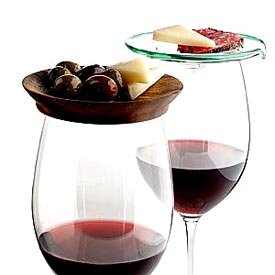A “first course” for beginners, this is a brief description of some of the most common tapas that visitors can expect to find in any typical tapas bar in Andalucia.
What are tapas?
Tapas are a variety of small savoury Spanish dishes, often served as a snack with drinks, or with other tapas as a meal. “Tapearing”, going from bar to bar for drinks and tapas, is an essential part of the social culture of Spain, especially in the south, and is something that every visitor to Spain should experience. Because tapas are informal, and the bars are often busy, they are commonly eaten standing up at the bar or at small tables or even upturned barrels, and the atmosphere is convivial and noisy. In most tapas bars you will see traditional cured hams hanging from the rafters, and many bars are decorated with posters for bullfights, Semana Santa (holy week) and the Feria de Abril (spring fair). Look (or listen) for bars that are full of locals – they will probably have the best tapas. If the weather is right and there is space it is often good to sit outside and to people watch and enjoy the hustle and bustle of life in the city.

History of tapas
There are a number of theories of the origin of the custom of eating small snacks with drinks. Legend has it that because of illness the thirteenth century Castilian king Alfonso X (the Wise) had to eat small snacks with his wine between meals to maintain his strength, and after recovering passed a law that wine or beer served in taverns had to be accompanied by food. More probably the origins were practical, with bread or a small plate of ham or olives being used to keep dust or insects out of the drink (the literal meaning of “tapa” is “lid”). It was also the custom for agricultural and other manual workers to eat small snacks so that they could continue working until the main meal of the day. Tapas in its modern form is generally believed to have begun in the taverns and bars of Seville and Andalucia.
Prices and eating times
Prices vary, but expect to pay €2-3 for a typical tapa. Kitchens are usually open between 1.00-4.00 in the afternoon, and later again from 8.00- midnight, though some bars will stay open between 5-8 serving drinks and cold foods. Many bars also open for breakfast, serving tostadas (toasted rolls with a variety of toppings), coffee and juices.
Ingredients (Mediterranean diet)
As with the Spanish diet in general, tapas are made from traditionally mediterranean ingredients, especially olives and olive oil, garlic, fish and seafood, and free range pork. Rice, in the form of paella, and potato omelette (tortilla) are also common. There is a huge variety of fish and seafood on offer, from salt cod (bacalao) and tuna to calamares (squid) and prawns. Although beef and lamb are also popular, the most common meat is pork, much of which comes from free range pigs, used for jamón iberica. Every part of the animal is used, including cheeks, trotters, tripes and blood. There is also a wide selection of cheeses, such as Manchego, and sheep and goat’s cheeses. Salads are usually simple dishes of lettuce, tomato and onion.
Vegetarians
While there are often a few vegetarian options on most tapas menus, you should be aware that many bars fail to mention that their grilled mushrooms come with bits of jamón serrano or the stuffed courgette is actually filled with ground meat. The typical potato salad (ensaladilla) is served with prawns, and even a mixed salad with often come with tinned tuna on top. Best to make sure before ordering that there is no meat or seafood.
Glossary (see Food Translations)
Some typical tapas
- Gambas al Ajillo: fresh prawns in sizzling olive oil with garlic and chili peppers
- Cazón en Adobo: fried marinated dogfish
- Bacalao: battered and fried salt cod (bacalao)
- Calamares: fried squid rings
- Chocos: cuttlefish, usually cooked “a la plancha” (grilled) or deep fried
- Espinacas con garbanzos: spinach and chick peas with olive oil and garlic
- Patatas bravas: fried potato wedges served with a spicy alioli sauce
- Ensaladilla: potato salad with mayonnaise and gambas
- Calamares del Campo: breaded and fried onions and peppers
- Gazpacho: cold tomato soup with cucumber and garlic
- Tortilla: potato omelette
- Revuelto: scrambled eggs with various fillings
- Paella: rice with saffron, tomatoes, meat and seafood
- Jamón Iberico: thinly sliced salt cured ham from free range pigs
- Solomillo al Whisky: pork tenderloin in whisky snd garlic sauce
- Albondigas: meatballs – most often pork, but also of beef or seafood